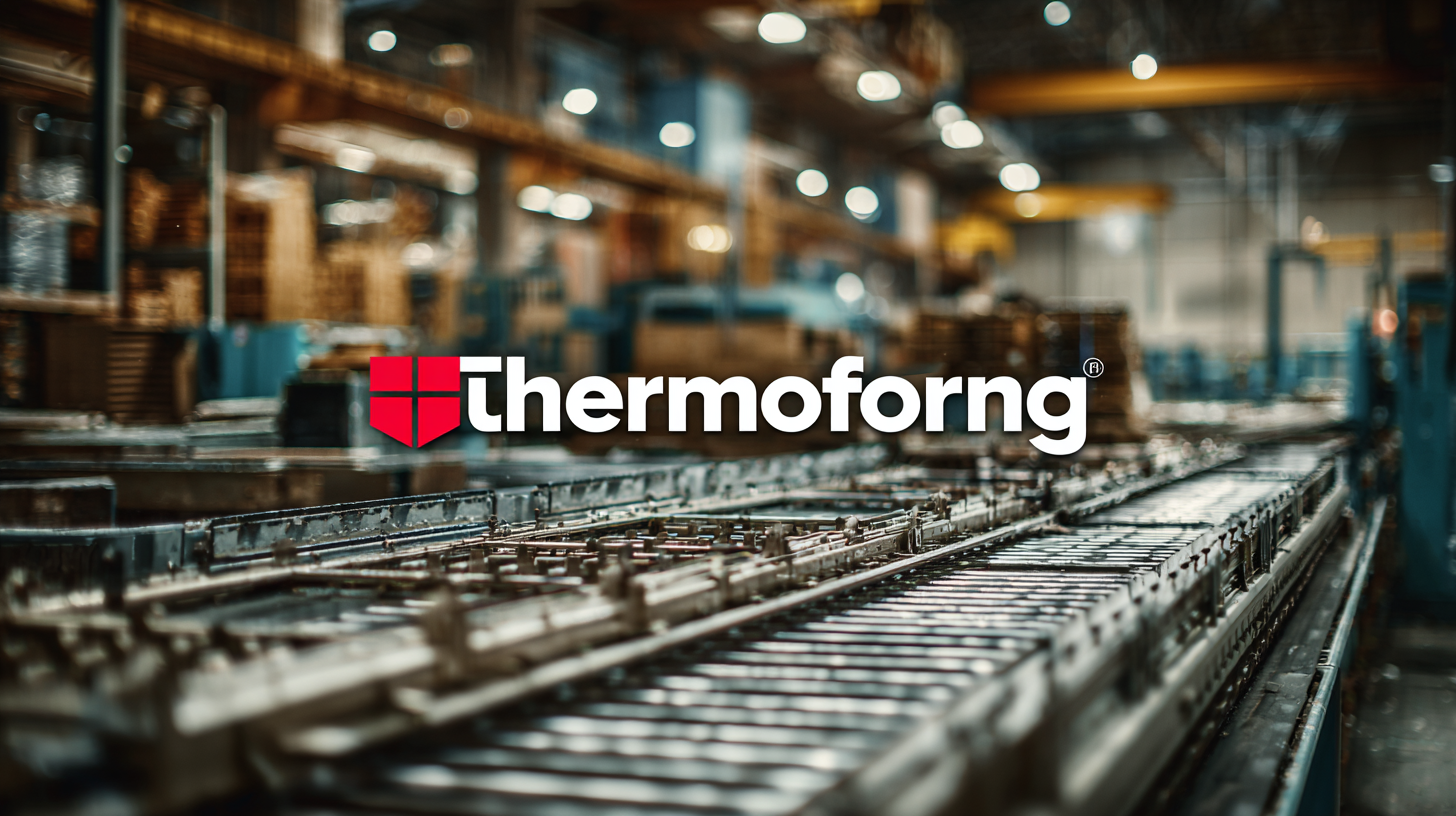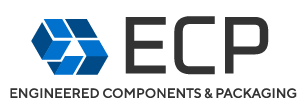585.204.6770
sale@sanblueplastics.com
Your Source for Trays!
How to Choose the Best Thermoforming Solutions for Your Manufacturing Needs
In today's competitive manufacturing landscape, selecting the right thermoforming solutions is crucial for optimizing production efficiency and product quality. Originating from top-tier factories in China, these innovative techniques are not only reshaping the industry standards but also building global trust among manufacturers. As businesses strive to meet diverse customer demands, understanding the various options available in thermoforming can significantly impact operational success. Whether you are aiming for cost-effectiveness, versatility, or scalability, this blog will guide you through the essential factors to consider when choosing thermoforming solutions tailored to your unique needs. Join us as we explore the advancements in thermoforming technology and how they can serve as a cornerstone for your manufacturing excellence.

Factors to Consider When Selecting Thermoforming Materials for Diverse Products
Choosing the right thermoforming materials involves a careful assessment of several key factors that can impact your product's success. When selecting materials for diverse applications, consider the specific requirements such as temperature resistance, durability, and weight. These factors not only influence the performance of the final product but also its suitability for the target market.
**Tip 1:** Evaluate the physical properties of materials, such as tensile strength and flexibility. Understanding these characteristics can help ensure that the chosen material can withstand the operational stresses it will encounter in real-world conditions.
Additionally, environmental factors should not be overlooked. With increasing awareness about sustainability, the eco-friendliness of materials is becoming crucial. Look for options that minimize environmental impact, like recyclable or biodegradable materials.
**Tip 2:** Conduct a cost-benefit analysis. Beyond the initial procurement costs, consider the long-term implications of material choices on manufacturing efficiency and waste management, ensuring that the selection aligns with both budget constraints and environmental goals.
How to Choose the Best Thermoforming Solutions for Your Manufacturing Needs
| Material Type | Process Compatibility | Applications | Cost per Unit | Average Lead Time |
|---|---|---|---|---|
| Polyethylene (PE) | Roll-fed & Sheet-fed | Packaging, Containers | $0.50 | 1-2 weeks |
| Polyvinyl Chloride (PVC) | Sheet-fed | Medical, Automotive | $1.00 | 2-3 weeks |
| Acrylic (PMMA) | Sheet-fed | Displays, Lighting | $2.00 | 3-4 weeks |
| Polypropylene (PP) | Roll-fed | Food Packaging | $0.60 | 1-2 weeks |
| High Impact Polystyrene (HIPS) | Sheet-fed | Toys, Automotive Parts | $0.75 | 2-3 weeks |
Understanding the Differences Between Rigid and Flexible Thermoforming Applications
When selecting thermoforming solutions for your manufacturing needs, it’s crucial to
understand the distinctions between rigid and flexible thermoforming applications.
Rigid thermoforming is typically used for applications requiring strength and durability.
This method involves heating sheet plastic until it becomes pliable, allowing it to conform to a mold's shape.
Common uses include packaging for electronics, automotive parts, and medical devices where protection and precision are paramount.
The final products provide a solid structure, making them ideal for items that must maintain their form.
On the other hand, flexible thermoforming caters to applications that demand versatility and adaptability.
This technique is often employed for products that need to bend or fold without cracking,
such as custom packaging solutions, display trays, and various consumer goods.
The materials used in flexible thermoforming can stretch and compress, offering a lightweight and cost-effective solution.
Understanding these differences helps manufacturers select the right thermoforming approach,
ensuring their products meet both functional requirements and market demands effectively.
Key Performance Indicators for Evaluating Thermoforming Equipment Efficiency
When evaluating thermoforming equipment, identifying key performance indicators (KPIs) is crucial for determining its efficiency and suitability for your manufacturing needs. According to a report by MarketsandMarkets, the thermoforming market is projected to grow at a CAGR of 4.8% from 2020 to 2025, reflecting an increasing demand for efficient machinery. Critical KPIs such as cycle time, material utilization, and energy consumption must be analyzed. A shorter cycle time can significantly increase production output, while optimal material utilization reduces waste, directly impacting profitability.
Furthermore, energy consumption is another vital indicator. A study by the Plastics Industry Association reported that upgrading to energy-efficient thermoforming machines can reduce energy costs by up to 30%. This not only lowers operational expenses but also aligns with sustainability goals, as manufacturers face growing pressure to minimize their carbon footprint. Companies should also consider the machine's downtime rates and maintenance requirements, as these elements contribute to overall efficiency and productivity. By focusing on these KPIs, manufacturers can make informed decisions that enhance their operations while meeting the evolving demands of the market.
Thermoforming Equipment Efficiency Evaluation
Cost Analysis: Comparing Thermoforming Solutions Based on Production Volume and Product Type
When selecting thermoforming solutions, it’s crucial to conduct a cost analysis tailored to your production volume and the specific type of products you aim to manufacture. The Global Pharmaceutical Blister Packaging Market is projected to reach USD 46.65 billion by 2034, with a compound annual growth rate (CAGR) of 7.72%. This growth highlights the importance of choosing effective thermoforming solutions that can efficiently meet production demands while maintaining cost-effectiveness.

To ensure you're making an informed decision, consider these tips: first, evaluate the scalability of the thermoforming technology. Some solutions may be ideal for low-volume production, while others are designed for mass manufacturing. Second, assess the specific materials needed for your product type. For instance, the thermoforming plastic market is diversifying, with options such as biodegradable polymers and PETG gaining traction. Lastly, remember to analyze the complete lifecycle costs, including tooling, material waste, and energy consumption, to identify the most economical choice for your business needs.
Trends in Thermoforming Technology: Innovations Shaping the Future of Manufacturing
The landscape of thermoforming technology is rapidly evolving, driven by advancements that are reshaping the future of manufacturing. One of the key trends is the integration of automation and robotics into the thermoforming process. These innovations not only enhance precision but also significantly reduce production times. Automated systems can handle repetitive tasks with minimal human intervention, allowing manufacturers to focus on more complex operations and creative design solutions.

Another exciting development in thermoforming is the use of sustainable materials. As eco-consciousness grows, manufacturers are increasingly seeking biodegradable and recyclable materials that do not compromise on quality. Innovations in material science have led to the creation of high-performance plastics that can be easily molded and repurposed, thus minimizing waste and promoting a circular economy. This shift not only meets regulatory requirements but also appeals to consumers who prioritize sustainability in their purchasing decisions.
Additionally, advancements in digital technologies, such as 3D printing and computer simulations, are revolutionizing design capabilities. These technologies allow manufacturers to test and iterate designs quickly, reducing time-to-market and improving overall product quality. By embracing these innovations, companies can enhance their competitive edge and better align with the dynamic demands of the market.
